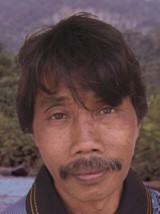Makian, East in Indonesia

Photo Source:
Copyrighted © 2026
Anonymous All rights reserved. Used with permission |
Send Joshua Project a map of this people group.
|
| People Name: | Makian, East |
| Country: | Indonesia |
| 10/40 Window: | Yes |
| Population: | 75,000 |
| World Population: | 75,000 |
| Primary Language: | Makian, East |
| Primary Religion: | Islam |
| Christian Adherents: | 0.00 % |
| Evangelicals: | 0.00 % |
| Scripture: | Translation Needed |
| Ministry Resources: | No |
| Jesus Film: | No |
| Audio Recordings: | No |
| People Cluster: | Maluku-Northern |
| Affinity Bloc: | Malay Peoples |
| Progress Level: |
|
Introduction / History
The Makian Timur (East Makian), also called the Makian Dalam (Inner Makian), live on the east coast of the island of Makian. The rest of the island is inhabited by the Makian Barat (West Makian or Outer Makian). Makian is part of the province of North Maluku. The Maluku Islands, historically called the "Spice Islands," consist of over one thousand islands scattered throughout eastern Indonesia. They include most of the islands between Sulawesi and Papua and between Timor and the Philippines. The Makian Timur people can also be found in small communities on the islands of Bacan, Obi and Mori Kayoa. The islands on which the Makian live have many volcanoes, one of which is Kei Besi, which has erupted several times. Its sudden eruption in 1975 claimed many lives and caused the government to evacuate residents near the volcano to Malifut on Halmahera Island. In the past, most observers classified the Makian as one people group with one language consisting of two dialects. However, careful linguistic analysis has shown that the West Makian language, Jitinee, is par of the West Papuan language cluster, while the East Makian language, Tabayama, is part of the Austronesiam language cluster. The Makian Timur language is part of a larger linguistic grouping called the South Halmahera which also includes the Gane, Buli, Maba, Patani, Sawai and Irarutu.
What Are Their Lives Like?
Most Makian Timur are farmers. Since their land is not appropriate for growing rice, their primary crops are corn and bananas. Infertile land (called jerame) is generally left to lie fallow for as long as 7-10 years. Such land becomes available for use by anyone who wishes, until the owner returns to work it again. The Makian Timur also cultivate coconuts, which are processed to become copra. The Makian Timur who live on Halmahera and other islands mostly work as fishermen, using fishing rods and hooks, dragnets, or large bamboo fish traps. The social system of the Makian Timur is a clan system, in which each family line in known as a soa. Individuals must marry someone from outside their soa. Traditionally, a new couple lives in the neighborhood of the husband's family.
What Are Their Beliefs?
As Muslims, the Makian Timur practice rites such as circumcision, prayer services at the mosque and fasting during the month of Ramadan. Traditional beliefs about the supernatural realm, however, have a powerful influence on their daily lives. The shaman is a powerful figure in Makian Timur communities. Islam was brought to the Makian Timur through a man named Mohamad Arzad, a Minangkabau Muslim from West Sumatra. He married the daughter of the Makian king and they had four children, named Torano, Bangsa, Um Imam and Sangaji.
What Are Their Needs?
The Makian Timur need better means of sea transportation, in order to expedite their trade and relationships with the communities of the neighboring islands. Formal and informal education is also needed to increase their income and improve their quality of life.
Prayer Points
Pray the Makian would see they can enjoy abundant life if they put their trust in Jesus Christ.
Pray for the Lord to intervene in their families, calling people to his side and blessing them in every way.
Pray for loving workers.
Pray for their hearts to be drawn to the Lord of lords.
Pray for a church planting movement to thrive in their communities.